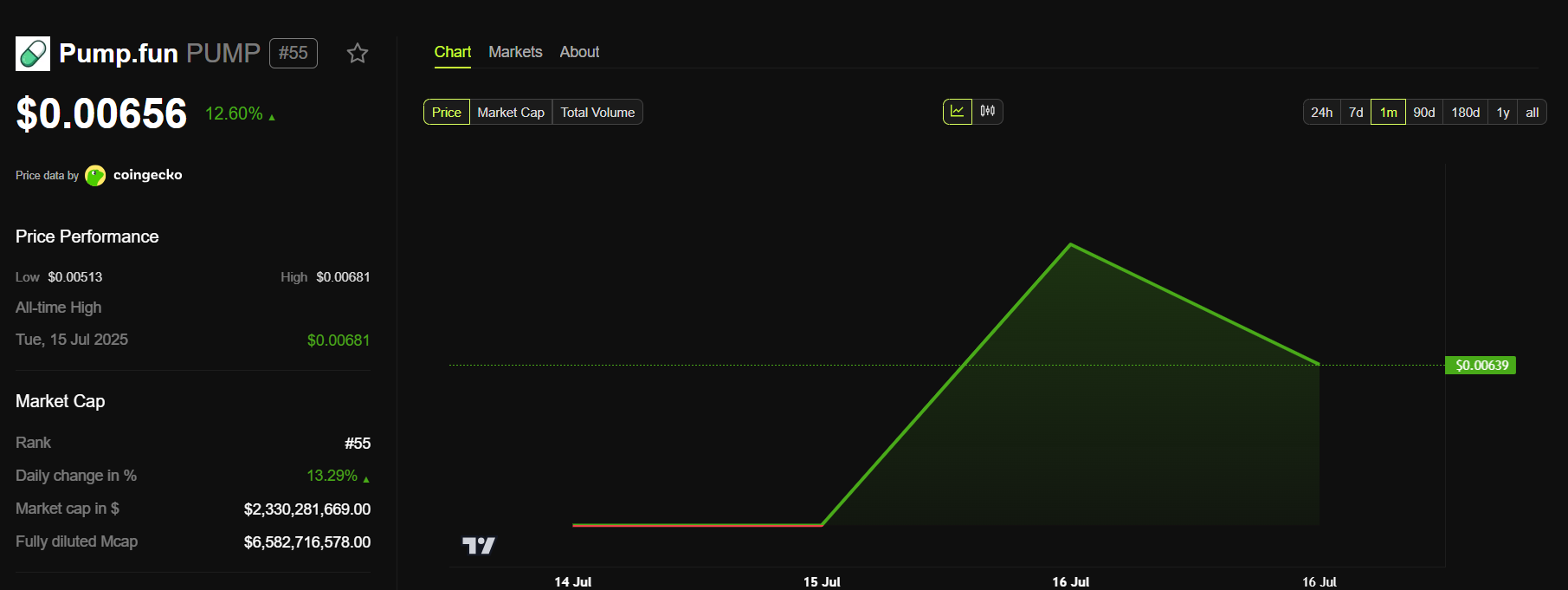-
Pump.fun’s recent $18 million token buyback has triggered a notable 15% surge in PUMP’s price, reflecting a wave of short-term bullish sentiment among investors.
-
Despite this price rally, the PUMP token continues to lack essential features such as utility, governance rights, or revenue-sharing mechanisms within its $4 billion ecosystem.
-
According to COINOTAG analysis, while buybacks can temporarily boost token prices, the absence of fundamental value raises concerns about PUMP potentially being part of a speculative bubble.
Pump.fun’s $18M buyback sparks a 15% price surge, but lack of token utility and governance raises questions about long-term sustainability in this $4B ecosystem.
Pump.fun’s Token Buyback: A Short-Term Price Catalyst Amidst Utility Concerns
Following its recent ICO, Pump.fun has attracted significant attention due to its ambitious $4 billion valuation. However, the project’s core token, PUMP, remains devoid of functional utility, governance capabilities, or revenue-sharing features, which are critical for sustainable ecosystem growth. The platform’s decision to allocate $18 million to a buyback wallet, funded by transaction fee revenues, has injected fresh momentum into the market, driving a 15% price increase within 24 hours.
This buyback strategy, while effective in reducing circulating supply and generating upward price pressure, primarily serves as a marketing tool to bolster investor confidence. At the time of writing, PUMP traded at $0.00656, marking a 12% gain over the previous day.

PUMP token price surges after buyback news. Source: COINOTAG
While buybacks are a recognized financial mechanism in both traditional and crypto markets, their effectiveness hinges on underlying project fundamentals. In Pump.fun’s case, the absence of tangible utility raises concerns about the longevity of this price rally.
Market Skepticism and the Risks of Speculative Buybacks
Community sentiment remains divided, with some investors skeptical of the buyback’s legitimacy. One notable critique on social media highlighted the cyclical nature of Pump.fun’s token sales and repurchases, suggesting a lack of serious industry standards. This skepticism is compounded by the fact that Pump.fun operates largely within the meme coin and presale sectors, which are historically prone to high volatility and speculative behavior.
Other projects like FET, AAVE, IOST, and Polyhedra (ZKJ) have also embraced buyback strategies, committing substantial capital. However, experts caution that such moves, absent robust technological advancements or clear token holder benefits, risk creating artificial price bubbles vulnerable to rapid corrections.
The Imperative for Long-Term Development and Real-World Utility
For Pump.fun to transcend its current speculative status, the project must prioritize building a comprehensive roadmap that delivers real-world utility and governance frameworks. Without these, buybacks may only provide ephemeral price support, failing to establish enduring investor trust or ecosystem stability.
Investors are advised to monitor upcoming developments closely and assess whether Pump.fun can introduce meaningful features that justify its valuation beyond short-term market maneuvers.
Conclusion
Pump.fun’s $18 million buyback has undeniably catalyzed a short-term price surge, reflecting investor enthusiasm. However, the token’s lack of utility, governance, and revenue-sharing mechanisms within a $4 billion ecosystem underscores significant risks. While buybacks can temporarily enhance market sentiment, sustainable growth will depend on the project’s ability to deliver tangible value and long-term development. Investors should exercise caution and prioritize projects with solid fundamentals to mitigate exposure to speculative bubbles.
